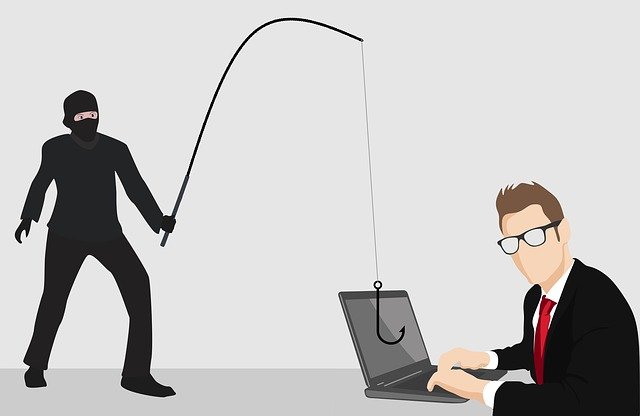Have you ever received a warning email from your bank stating that your account might be frozen if you do not verify your information? And the link in this email will take you to the website, where you will have to enter details like your bank account and social security number.
The problem with these emails is that they do not come from your actual bank. They are, in fact, part of a scamming tool known as phishing managed by cybercriminals who are a threat to your cybersecurity.
What Is Phishing?
Phishing is a kind of online scam where cybercriminals pretend to be legitimate organizations. They lure you via advertisements, text messages, emails, or phone calls to steal sensitive information. It is done by adding a link to a website that will be a replica of the original website of the organization. Any sensitive or personal information shared via this link goes to the crooks behind the scams. It will give them access to the system or account that often leads to financial loss or identity theft.

What Are The Different Types Of Phishing?
Over the period of time, phishing has evolved into many highly-specialized tactics. The attackers are constantly working to find new ways to exploit vulnerabilities. Here are some of the most common phishing techniques that you must be aware of:
Email Phishing
It is the most common tactic, and the emails are worded with a sense of urgency. They appear to be from a legitimate source, like Microsoft, Apple, your bank, or other known company. If the emails look suspicious use a DMARC analyzer to check the email domain and avoid the phishing or impersonation attacks.
Search Engine Phishing
In this technique, cybercriminals design fraudulent websites that show up in the organic search results or as paid advertisements for popular search terms. It is used for collecting payment information or personal data.
Spear Phishing
It is an advanced targeted attack in which attackers target specific individuals like business executives and public personas. It is done to compromise the organizations like banks, hospitals, or universities.
Man-In-The-Middle (MITM)
In this attack, the hacker tricks two unsuspecting people into sending information to each other. After joining, the MITM phishes you for information or pushes the malware into the system. These attacks are often carried out by creating free public Wi-Fi at shopping malls, coffee shops, and other similar places.
Malware
It is the same as email phishing, in which the attacker encourages you to download an attachment link. This link will inadvertently install software on your device that will mine data from your device. Sometimes, they even use keylogging malware that tracks keystrokes to discover passwords.
Smishing
SMS-enabled phishing delivers fraudulent text messages disguised as political messages, prize notifications, and account notices. It is done to gather information like credit card numbers or passwords.
How To Prevent Phishing
By being a little vigilant, you can save yourself from being a victim of a phishing attack. Here are some steps that you can follow to mitigate an attack:
Install a VPN
Installing a VPN for PC, laptops, and other devices can safeguard you from phishing attacks like MITM and malware. It adds a secured layer to your device and prevents it from getting phished.
Activate Two-factor Authentication (2FA)
It is one of the most effective ways to counter phishing attacks. Two-factor Authentication adds a verification layer to all sensitive applications. To access your account, the cybercriminal should have access to both your password, as well as your smartphone.
Change Passwords Frequently
You should change your important passwords frequently and try to avoid using the same password for many applications. A fraudster will get access to only a single account if they can phish you successfully.
Check Spelling of The URLs Before Clicking
Double-check the spelling of the URL before entering any sensitive information. Watch for any URL redirections or any suspicious links before sharing any data through it.